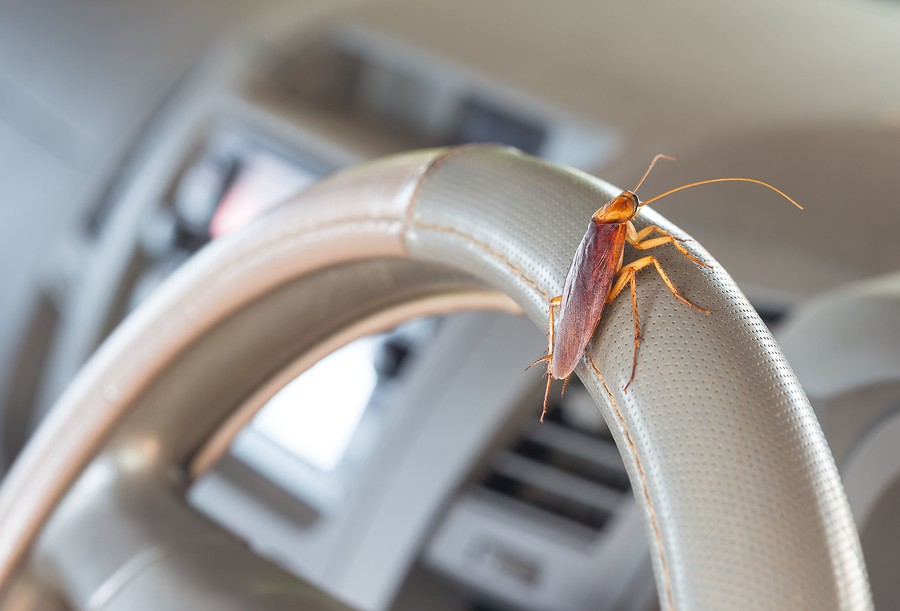How to Get Rid of Roaches in a Car www.redully.com

How to Get Rid of Roaches in a Car
So, you’re driving down the highway on your way to work when suddenly, you catch a glimpse of a cockroach skittering across your dashboard out of the corner of your eye. While you know roaches can infest homes or commercial buildings, you didn’t know they could take up residence inside of your vehicle. How do you get them out? There’s really no where to escape to.
Roaches in cars are more typical than you think. Even like your home can become infested with bugs, so can your car. Yet, most folks are shocked when roaches set up shop inside of their vehicle, especially if the car is not a clunker and your daily driver.
So how do you get rid of roaches in a car? In this extensive guide, we’ll explore why you even have the problem in the first place, some tips on how to safely rid your vehicle of roaches, and how to keep them at bay in the future.
How to Identify Roaches in Your Car
Sadly, the truth is, if there are roaches in your vehicle, it’s your own doing. Sometimes it could be as innocent as forgetting to roll your windows all of the way up at night. But more often than not, it’s because people love to eat in their cars. This is especially true if you have kids or are on the go all of the time.
While you’re in a rush to drive, get to work on time, and have breakfast, you may have dropped a few crumbs here or there onto your floor mats. Over time, these tiny crumbs add up and become a feast for hungry bugs.
While there are many different species of roaches, all of them share a few common characteristics. Firstly, they all have that telltale oval-shaped body that appears flat and ranges in length between ¾ of an inch and three inches. Most are red or brown in color, or appear to be whitish just after they shed their old skin.
All of these pests are super fast, so manually swiping or stomping them isn’t going to rid your precious car of these icky insects. In addition, cockroaches can carry viruses and bacteria, which could be harmful to your health. In fact, they’re known to spread more than 30 types of bacteria, as well as parasitic worms.
When dealing with roaches inside of your car, van, SUV, or truck, you have to understand that they’re in your vehicle in the first place because they will find food here. Keep in mind that these critters only need three things to survive and will relentlessly hunt for these vital necessities, including food, water, and shelter. If you eliminate those items, they’ll die or give up tenancy in your car.
Where to Inspect and What to Look For
You will need to inspect the interior of your car. Most notably, where food could have accumulated. They may have crawled into your vehicle or hitched a ride on your clothing or possessions.
Inspect on, under, and around your seats. Don’t forget to look in the small crevices of the seat cushioning and fabric, glove compartment, where you stash your garbage, and on the doors.
When looking for roaches in your car, check for live bugs as well as droppings. You’re more than likely to detect a foul and unique odor if the infestation is a significant one.
The Dangers of Having Roaches in Your Vehicle
Bugs inside of your car aren’t just gross. They’re a danger as well.
As we mentioned earlier, roaches can carry and spread more than 30 types of bacteria. Also, as they crawl through your car, they will leave behind skin shedding, bodily fluids, and feces. Since your car is a tiny space, this can easily turn into a haven for cockroaches to breed.
Cockroaches can even carry some diseases, including salmonella. This can cause typhoid. Polio has also been found on these bugs, which can cause severe diarrhea and bleeding in humans.
Getting Rid of the Roaches
Once that you have identified that you have a roach problem inside of your car, it’s time to get to work. Here are a few tips to rid your car of roaches:
Step One: Vacuum Your Car’s Interior
This step is a no brainer. Take a hand vacuum or drive to a DIY car wash and use their vacuum to clean out the interior. While you’re at it, throw out any garbage that has accumulated inside of your vehicle. Once complete, you can then apply insecticide to guarantee that no bugs are still alive inside of your vehicle.

Comments
Post a Comment